RIOS’ Holistic Vision for Better Senior Living
RIOS is redefining senior living with designs that enhance quality of life at any age. Our holistic, research-driven approach know as the “longevity ecosystem” creates places that help people live better, longer. Our design vision builds cross-generational communities, supports wellness at any scale, encourages meaningful daily rituals, and connects people to nature.
Reimagining senior living environments has never been more urgent. A recent initiative of the AARP notes that by 2030 one in five Americans will be 65 or older. The rise in the number of seniors is a global phenomenon, yet no aligned shift exists in architecture and design to address the aging of twenty percent of the population. The AARP also reports that 77 percent of adults over 50 desire to age in place, emphasizing that long-term physical and mental health is part of a holistic system rooted in community, wellness, and autonomy. Outdated typologies that isolate older adults from everyday life must evolve into inclusive design environments that foster connections and provide ready access to care and long-term services and support over time.
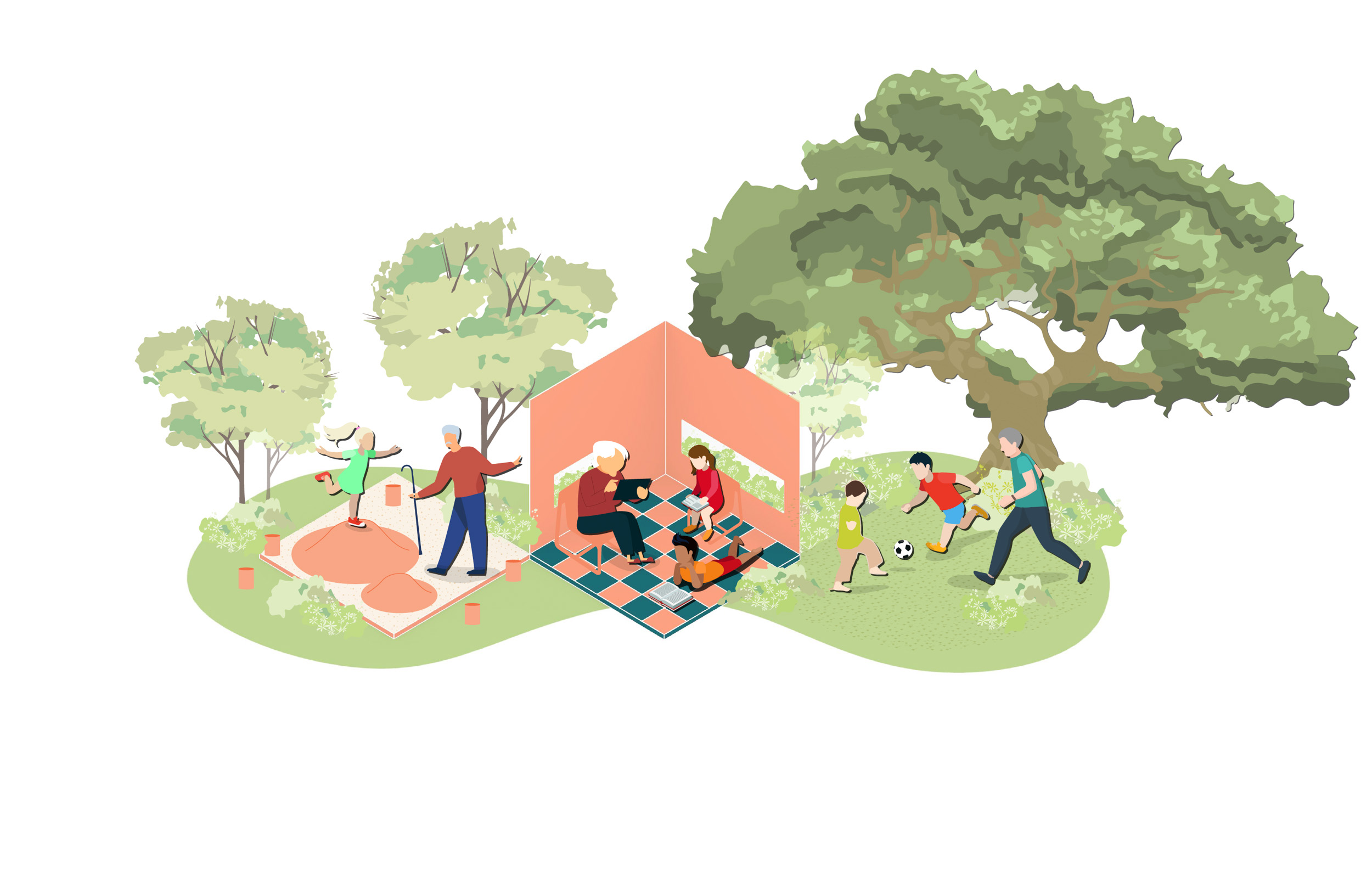
RIOS' longevity ecosystem brings generations together in nature-integrated communities defined by successful urban design principles.
Longevity Ecology for Future Senior Living
At RIOS, we see longevity ecology, an interconnected system of people, spaces, and amenities, as the best practice for making exciting places to grow older. “We must redefine senior housing and go beyond preconceived definitions as an institutionalized typology,” says Creative Director and Partner Mark Motonaga. Boomer and Gen X generations are aging differently than previous cohorts. They prioritize health, are active, and connected to friends and family. Senior housing must adapt to these changing needs by fostering environments that emphasize mobility, daily engagement, and emotional wellbeing.“How do we address this growing population and help seniors proactively plan for their later years?”
The longevity ecology concept proposes that senior living is not a segregated building solely focused on end of life comfort and care, but as an integrated, dynamic community supporting wellness, social interaction, and continued personal growth in the later parts of people’s lives. Considering design both essential and proactive, we continually ask “How do we keep people’s whole body, mind, spirit, active?”
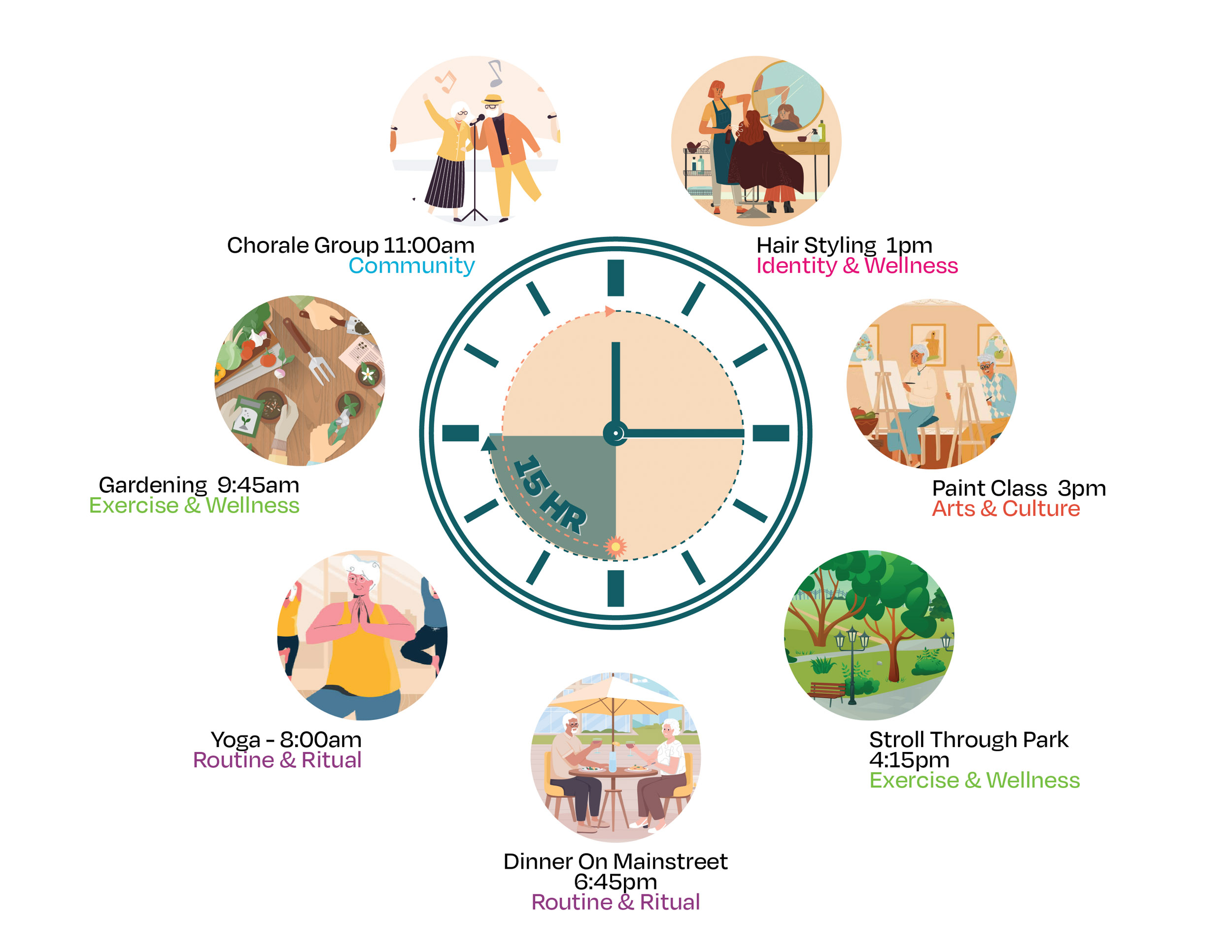
Daily rituals and 15-hour active schedules improve cognitive health and wellbeing.
Wellness-Focused Senior Living Design at Every Scale
RIOS believes that health and wellness must be considered at every scale, from the most intimately scaled detail to the urban fabric. Each design decision along this spectrum supports dignity and accessibility. This begins with building an ideal-sized community to foster wellbeing. Dunbar’s number, developed by British anthropologist Robin Dunbar, theorizes that the strongest, cohesive social groups are approximately 150 individuals. This limitation correlates to the number of stable relationships a human brain can comfortably maintain.
The Dunbar’s number guides our proposal for an Austin-based Student Housing Competition, a prototypical precedent for our senior living concepts. The challenge of the 331-unit project was how to generate a close-knit community within a 317,000 square-foot (29,450-square-meter) scheme. Our vertical concept rethinks traditional campus housing by creating a series of smaller stacked neighborhoods. We alternated the layout every four or five floors, and we were able to create outdoor sky terraces where smaller cohorts of residents could find amenities and have a shared experience. The lessons of student housing apply to senior living architecture: by creating smaller villages within the larger ecosystem we can strengthen the community and, by extension, overall wellbeing.
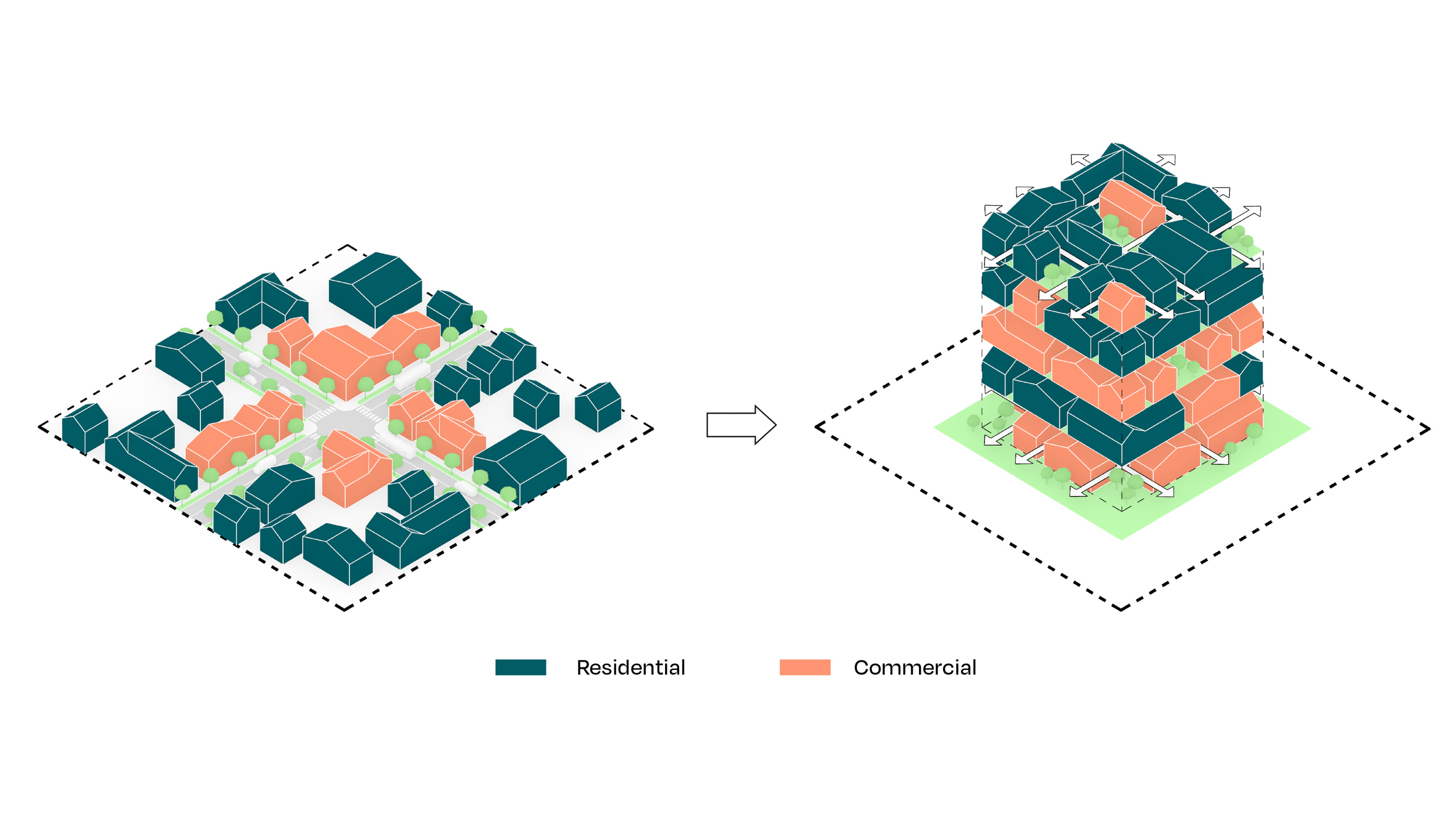
Applying mixed-use programs and urban design to vertical communities strengthens social connections, walkability, and cognitive health for aging in place.
Lessons From Urban Design
RIOS’ longevity ecology is inspired by what we already value so much about great cities: mobility and walkability, proximity to services, creativity, and belonging. You can take a walk, meet friends for coffee, or linger in an art museum or bookshop. You are part of a neighborhood.
This urban design approach is grounded in research that suggests that older adults thrive when they have active daily routines and regular intergenerational interactions. Physical and cognitive factors improve with relationships (family, acquaintances, or pets) that add meaning and a sense of purpose to a senior’s life.
A 2023 report from South African scientists Elizabeth Jane Earl and Debbie Marais noted that study participants felt better “through gaining the opportunity to provide support or play a role in the lives of others,” stressing that this kind of community engagement might be “important as an expression of self-agency and autonomy.”
Additionally, a study from JAMA Psychiatry found that patterns of activity—daily routines and rituals—improve cognitive health in older adults. Better emotional wellbeing was found in study participants who were active for 15 hours a day. Scientists reported that activities didn’t need to be high intensity to make a difference. What was important was regular engagement with others and rituals that establish time cues to set the body’s internal clock: sunlight, meals, and exercise.
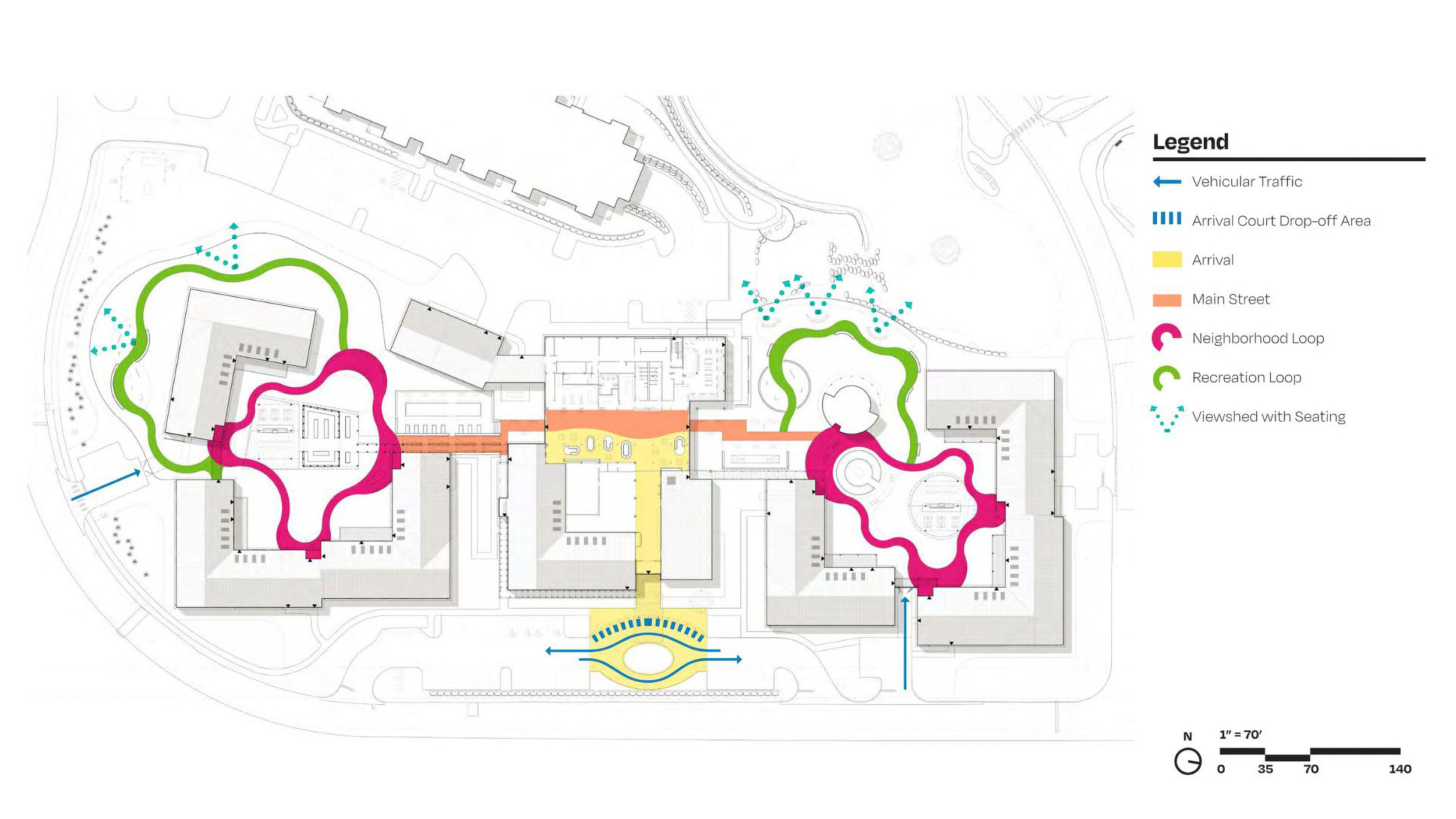
The plan for this facility within Willow Valley Communities clusters amenities and creates circulation loops that support mobility and wayfinding for seniors.
Our urban design strategies translate to real design, supported by findings suggesting that parks, plazas, and community hubs as places where people of all ages can congregate and participate in the rituals of a 15-hour active day. A “Main Street” development, where amenities are clustered together, leads to designs where residents can connect, move, and thrive. At RIOS, however, we like to question established typologies that overly dictate the program and function of a space. Instead, we think about how stale typologies might be adapted into more flexible, dynamic spaces that better serve our current moment, while deepening a connection to place.
Our scheme for Echo Street West, an 18-acre mixed-use district in Atlanta illustrates how interconnecting office buildings, retail and dining establishments, artist and maker workshops, creative event spaces, and nearly 300 multi-family residential units contribute to a longevity ecology. Located on a former industrial site, our design reintroduces nature to the property and strengthens connections to the Atlanta Beltline and surrounding neighborhoods by multi-modal trails and greenways. Landscaped pedestrian and bike paths support daily activity and sustainable mobility. Planted outdoor plazas adjacent to retail establishments, or “urban porches” are healthy and collaborative gathering areas that could support daily rituals and intergenerational exchange. And event lawns and a woodland park present inclusive ways to build community.
By designing flexible, intergenerational environments for the rituals that shape our urban experience—from the daily dog walk to life markers like anniversary parties or cultural celebrations—we can establish a new vernacular. One that’s responsive to local and global contexts, reflecting the desires and curiosities of Boomer and Gen X adults.
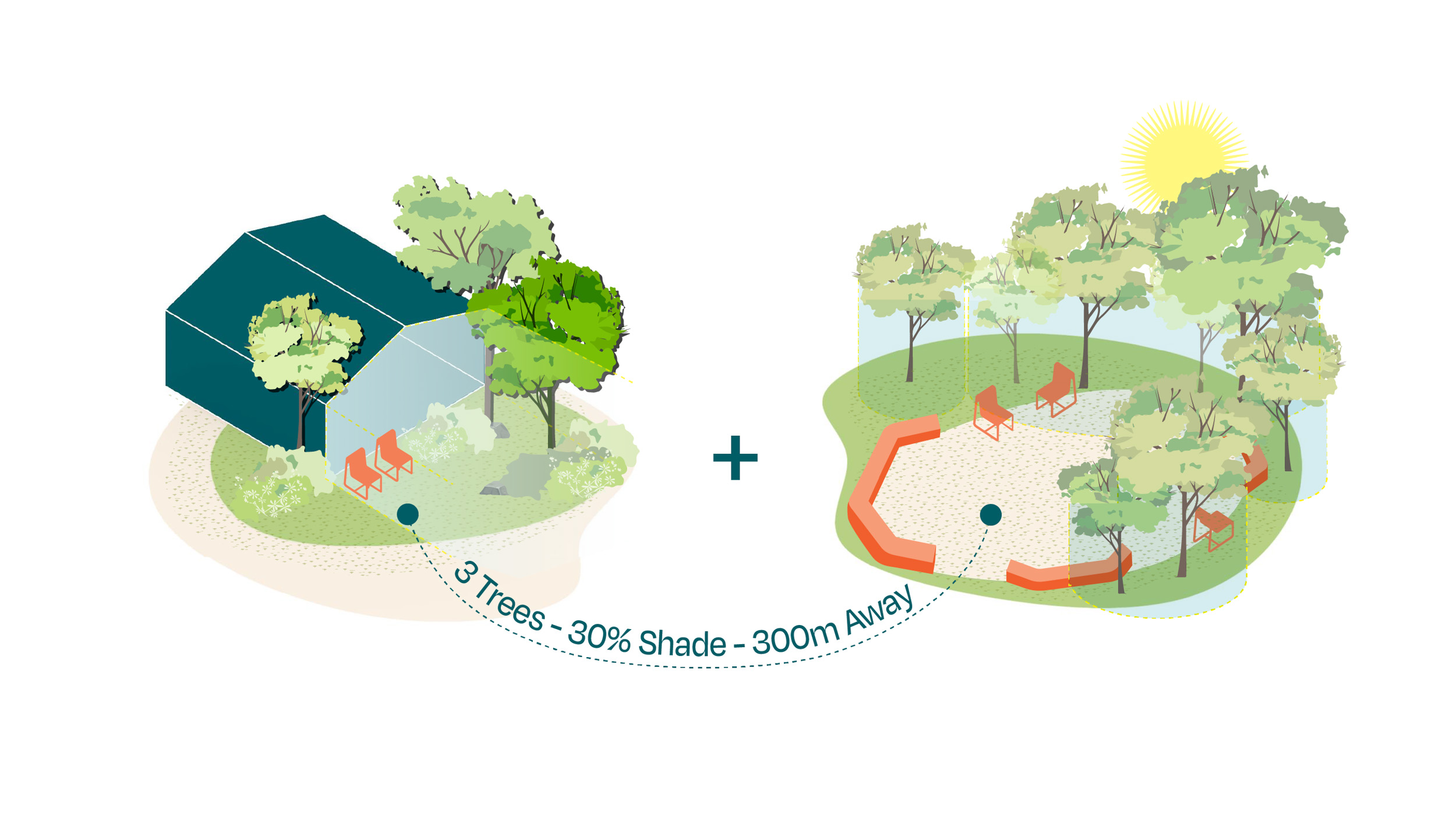
Within ideal senior communities, RIOS applies the 3+30+300 guideline, recognizing that accessible nearby nature supports urban wellbeing.
Connecting to Nature for Cognitive Wellness
Nature is a powerful tool in designing for aging. Multiple studies demonstrate how home and community gardens and public parks help keep older adults active, purposeful, and mentally acute. “Exposure to nature through gardens and gardening activities can enhance psychological well-being through emotion regulation and relief from stress,” write Australian researchers in a 2020 paper. And nature has ways of evoking memory and nostalgia. “Touching a particular plant or smelling a certain flower may transport a person back to their childhood,” they continue.
At RIOS, we work interdisciplinarily, blending architecture, landscape, and urban design to create synthetic connections with nature. Guiding our efforts is the 3+30+300 rule, a tree-based metric developed by urban forestry expert Cecil Konijnendijk in 2021. The rule presents three guidelines for increasing the health and climate resilience of our cities. It suggests that people should be able to see three mature trees from their home or office, that neighborhoods have a 30% urban tree canopy, and that public green spaces should be within 300 meters.
From plant to park, nature is important at all scales of senior living and cognitive design. With our design for the interiors and landscape of Willow Valley Senior Housing, a residential project in Pennsylvania that exemplifies RIO’s Main Street model. We maximized the connection to nature by organizing the living units around lushly landscaped courtyards, creating restorative views from the inside. By integrating the landscape and plants into the overall architecture and interior design, we were able to use plants and clear, bright material expression as part of a wayfinding system that helps seniors safely navigate through buildings.
The Marlin and Doris Thomas Memory Center at Willow Valley Communities exemplifies how a longevity ecosystem amplifies the benefits of linking people and the built environment to the natural world.
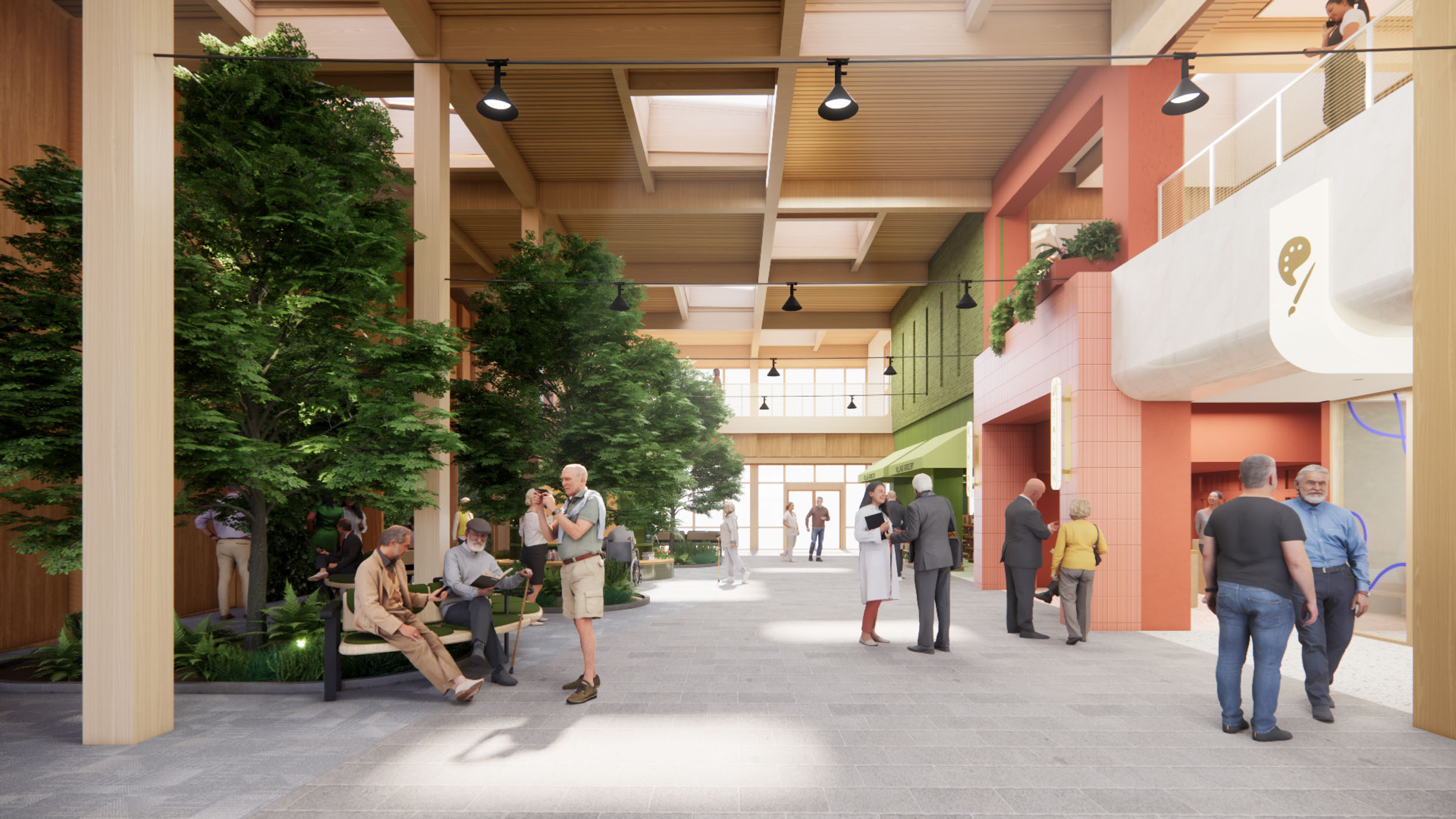
This memory care facility at Willow Valley Communities embodies RIOS' longevity ecosystem with nature and amenities that support cognitive health.
Designing the Future of Senior Living
As demographic trends reshape our cities and communities, the need for innovative, inclusive, and sustainable approaches to senior living has never been more critical. RIOS’ longevity ecosystem is not simply a design strategy—it’s a call to reimagine senior living from the ground up.
By moving beyond the outdated paradigm of senior housing as isolated or clinical, we can radically redefine how we age and where we live. A new vernacular integrates wellness at every scale—from master plan to detail—and leads to lifelong vitality. In fostering intergenerational relationships and access to nature, we build environments that elevate the human experience in later life.
“We have the research about aging, wellness, and mental acuity, and we have the audience seeking a better way to live their lives,” said Motonaga. “The way that people seek to live as they age is changing, and RIOS is adapting to that imperative with how we design because ultimately, we are all seeking longevity.”
Everyone ages. We design for dignity, autonomy, and joy—for daily rituals, unexpected encounters, and shared purpose. Our goal with the longevity ecosystem is to support people in growing older within the world—not apart from it—by staying active, engaged, and connected within a community for years to come.